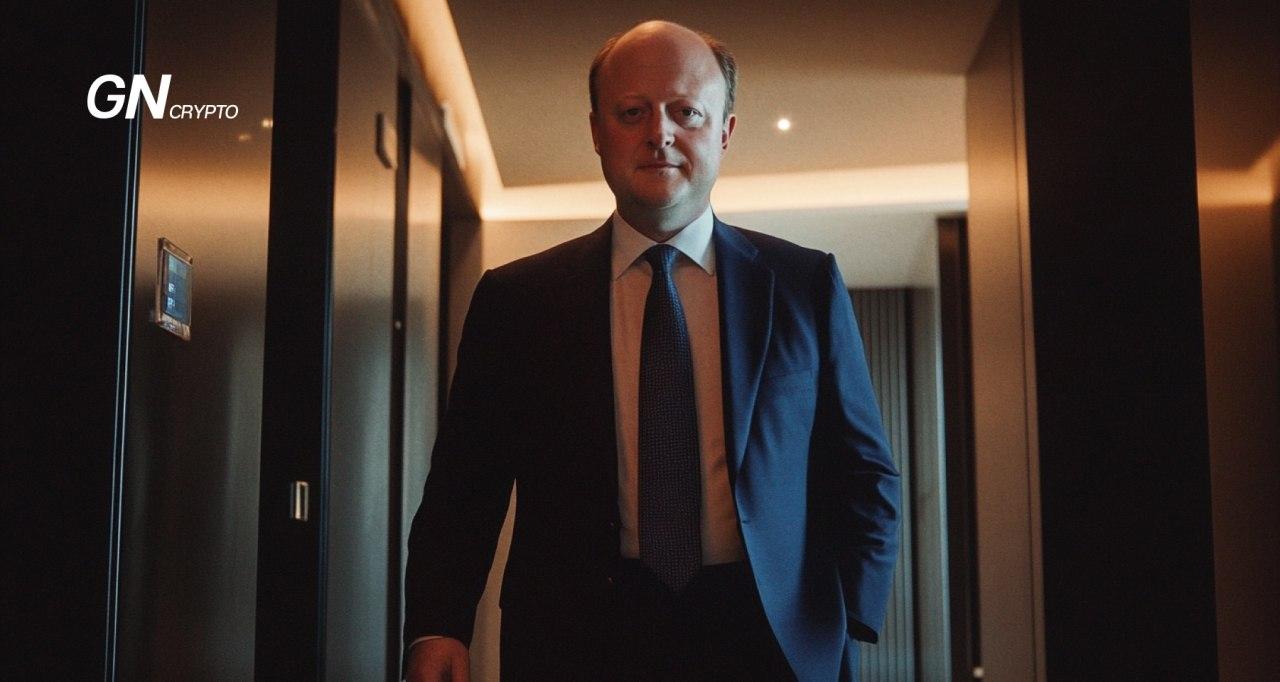Jeremy Allaire (Circle): Going Public in a Time of Transition

In a candid interview, Circle’s CEO discusses the company’s future as it prepares for an IPO and navigates shifting economic conditions.
On this page
The Impact of Interest Rates on Stablecoins
One of the key topics Jeremy Allaire emphasized was the effect of the Federal Reserve’s interest rate cut on Circle’s business.
On September 18, 2024, the Federal Reserve lowered interest rates by 50 basis points to 5%. This cut was highly anticipated, as the previous rate had been held steady since July 2023, with many viewing the Fed’s cautious approach as overly conservative.
Read more: BTC Surges After U.S. Interest Rate Cut
So, how does this relate to Circle?
Stablecoin issuers, like Circle, rely on holding reserves that back the digital assets they issue. These reserves are typically invested in U.S. Treasury bonds, which earn interest for the holders.
While low interest rates can stimulate economic growth, higher rates benefit holders of government bonds by providing them with a steady income stream.
This recent decision by the Federal Reserve to cut rates raises questions about how it will affect Circle and other stablecoin issuers going forward.
Read more: Jeremy Allaire on USDC Collateral
Circle CEO Jeremy Allaire. Source: Х
In his response, Allaire first provided a broader context for Circle's business.
He described Circle's flagship product, the USDC stablecoin (pegged to the USD), as an “Internet scale Network utility,” emphasizing that the company's core value lies in its global, open-access stablecoin network.
This network connects users, developers, and financial institutions, enabling them to use USDC for a variety of purposes, from payments to trading.
USDC is integrated into a wide range of products and services, significantly strengthening Circle's market position. For example, Stripe, one of the world’s largest payment platforms, now supports USDC, allowing millions of U.S. merchants to accept stablecoin payments.
Read more: Paxos Unveils New Payment System: Revolutionizing Transactions
It's easy to see the speed and determination with which Circle is embedding itself into both traditional finance and DeFi—USDC transactions have already facilitated more than $16 trillion.
However, the prospect of lower interest rates brings up crucial questions about the company’s financial outlook.
Allaire doesn’t shy away from acknowledging the issue.
But what happens if we consider it from different perspectives?
Low Interest Rates: A Benefit for Circle’s Business?
In discussing how the changing economic landscape might impact Circle, Jeremy Allaire touched on a wide range of possible outcomes. He acknowledged the uncertainty around the effects of lower interest rates:
We don’t actually know entirely what the price of money does to the demand and supply of a digital currency like USDC.
Despite this uncertainty, Allaire emphasized his understanding of the critical role interest rates play in today’s economy. By affecting the speed at which money moves, interest rates have a direct impact on economic activity.
When the Federal Reserve cuts rates, the goal is to increase the velocity of money in the economy,
Allaire explained.
In the long run, lower interest rates could be beneficial for Circle. More capital in circulation means a higher demand for USDC as a “high-velocity monetary utility,” Allaire believes.
Read more: Jerome Powell: Crypto Market Braces for Fed Chair’s Speech
However, while Allaire is optimistic about the future, lower interest rates could pose short-term challenges to Circle’s revenue model.
As interest rates drop, Circle’s treasury reserve earnings will decrease, potentially reducing profit margins. This challenge applies to other stablecoin issuers as well.
Circle’s Office. Source: CoinDesk
How Interest Rates Impact Financial Markets
To provide further context on Circle's position, Allaire compared the stablecoin market to the broader financial ecosystem.
He explained that in traditional markets, higher interest rates tend to reduce economic activity by making borrowing more expensive. This affects everything from consumer spending to small business loans, as both personal and corporate borrowing costs rise.
When your income is stable, higher interest rates mean you pay more on existing debts, leaving less room in your budget for other expenses. Expanding your credit to maintain spending levels also becomes more costly, and not everyone can afford that. As a result, borrowing slows, and there’s less money circulating in the economy.
When rates go up, lending velocity slows, You get a dampening effect,
Allaire noted.
The opposite is true when rates fall: more loans are issued, and overall economic activity increases. Entrepreneurs are more likely to start new businesses, expand operations, or hire additional staff when they can access cheaper capital.
Federal Reserve interest rates since the 1960s. Source: macrotrends.net
Allaire believes this same principle applies to Circle's business.
As interest rates decrease, borrowing costs drop, which encourages greater risk-taking and investment growth.
Demand for Circle's stablecoins, particularly USDC, increases in a ripple effect, as more people turn to USDC for savings, cross-border payments, and trading activities.
Both individuals and institutions will seek to benefit from cheaper capital and heightened economic activity.
Lower interest rates would be a very good thing for Circle’s business,
Allaire concluded optimistically.
Is Circle Preparing to Become a Public Company?
Talks about Circle planning an IPO have been circulating in crypto and financial circles for some time. The company filed a confidential application in early 2024.
While specific details remain undisclosed, Jeremy Allaire has made it clear that going public is a crucial part of Circle’s long-term strategy.
We believe becoming a U.S.-listed, publicly traded company is critical to our future,
he said.
For Circle, the decision to go public is rooted in its commitment to greater transparency, trust, accountability, and compliance. Allaire sees a public listing as a way to further strengthen Circle’s reputation in the market.
As a publicly traded company, Circle would be held to higher governance standards and provide more visibility into its operations.
Read more: Circle Declares Full MiCA Compliance for USDC and EURC
The IPO is expected to help Circle scale its global operations, enabling more businesses, governments, and institutions to adopt stablecoins for fast and cost-effective transactions.
This would allow Circle to leverage its status as a trusted and regulated entity, helping it capture an even larger market share.
Following the news that Circle is moving its global headquarters from Boston to New York, there’s speculation that the company is aiming for a listing on the New York Stock Exchange.
Renovations at Circle’s new headquarters in New York. Source: Х
The new office, located in the World Trade Center, is expected to open in early 2025. Circle’s move to New York is another sign of its increasing integration with traditional finance.
As this technology explodes into the mainstream, and as Circle becomes a more and more important company and infrastructure for this new internet financial system, it became clear that we needed to plant our flag, both literally and figuratively, in the heart of Wall Street, in the most important economic center of the world, and in the great country of the United States of America,
Allaire wrote on X.
Overcoming Regulatory Challenges
As Circle continues to grow, regulatory scrutiny is inevitable, especially as the stablecoin market expands.
Allaire acknowledges this reality, noting that regulatory checks have become routine for the company.
Read more: Jeremy Allaire Advocates for Stablecoin Regulation
Despite the challenges, Allaire remains optimistic, believing that Circle’s focus on compliance and transparency will help it navigate the complexities of global financial regulations.
Becoming a publicly listed company provides more compliance with rigorous stock exchange and SEC rules,
Allaire emphasized.
Interestingly, back in February 2024, Allaire took a different stance on the SEC in an interview with Bloomberg.
I don’t think the SEC is the regulator for stablecoins. There is a reason why everywhere in the world, including the US, the government is specifically saying payment stablecoins are a payment system and banking regulator activity,
Allaire said at the time.
By fall 2024, Allaire’s perspective is clear: in an era where governments are increasingly focused on regulating digital assets and stablecoins, Circle’s proactive approach to compliance could be a competitive edge.
This is particularly significant given the many regulatory hurdles that other U.S. crypto companies consistently encounter.
The Future of Circle: A Global Financial Platform
When considering Circle's broader vision and its place in the global financial ecosystem, Allaire positions Circle not just as a cryptocurrency company, but as a key player in the transition to a fully digital financial world.
USDC is already used by millions of people and businesses globally, facilitating payments for everything from daily expenses to complex financial transactions.
For Allaire, Circle’s future lies in its ability to scale this network further, connecting traditional financial systems with the growing world of DeFi.
We’re providing a stablecoin network that is open and accessible to end users, developers, and financial institutions,
Allaire noted, underscoring Circle’s role as a bridge between legacy finance and the digital future.
As the company expands its network and prepares for its IPO, Allaire remains focused on Circle’s strategic goal: creating a global, trusted, and transparent financial platform that meets the highest standards of governance.
USDC: A Leader in the Global Stablecoin Market Source: CoinMarketCap
Why not?
With interest rates falling and regulatory clarity on the horizon, Circle, already the second-largest player in the stablecoin market, is well-positioned to thrive in the growing digital economy.
The content on The Coinomist is for informational purposes only and should not be interpreted as financial advice. While we strive to provide accurate and up-to-date information, we do not guarantee the accuracy, completeness, or reliability of any content. Neither we accept liability for any errors or omissions in the information provided or for any financial losses incurred as a result of relying on this information. Actions based on this content are at your own risk. Always do your own research and consult a professional. See our Terms, Privacy Policy, and Disclaimers for more details.































